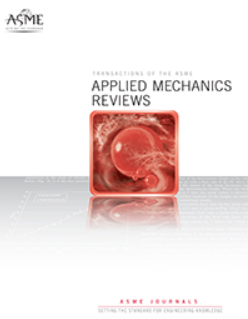钢和组合框架结构在地震荷载作用下的非弹性性能
IF 16.1
1区 工程技术
Q1 MECHANICS
引用次数: 0
摘要
如今,当需要轻量、高强度、大跨度、安装速度更快的结构时,钢结构更常被用作钢筋混凝土的替代品。研究人员对钢筋混凝土和钢结构的抗震性能进行了广泛的研究,包括弹性和非弹性性能。复合建筑也是近期建筑行业的进步,具有类似的优势。然而,对于钢结构和复合结构在侧向荷载作用下的非弹性性能的比较没有得到重视。本研究比较了钢和复合框架的非弹性行为,设计具有相同的塑性弯矩能力的结构成员。在建筑分析和设计软件ETABS-18的帮助下,对铰链形成、楼层漂移、楼层位移、横向刚度、延性、最大强度、能量消耗、关节加速度和性能点等响应进行了比较。为此,对两榀框架进行了响应谱分析、推覆分析和非线性直接积分时程分析。对于设计和分析,使用了国际规范,如IS 800-2007, IS 875(第一部分,第二部分,第四部分),IS 1863 -2002, AISC 360(16和10)和FEMA 440。本研究的一部分还旨在比较这些框架在遭受近场和远场地震时的反应。结果表明,在地震作用下,复合框架的屈服后性能优于钢框架。本文章由计算机程序翻译,如有差异,请以英文原文为准。
Inelastic Behavior of Steel and Composite Frame Structure Subjected to Earthquake Loading
Steel construction is used more often these days as an alternative to the R.C.C. when lightweight, high-strength, large-span structures with a faster erection are required. Extensive studies have been conducted by researchers to study the seismic performance of reinforced concrete and steel structures, both in terms of elastic and inelastic behavior. Composite construction is also a recent advancement in the building industry with similar advantages. However, no emphasis has been given to the comparison between the inelastic behavior of steel and composite structures when subjected to lateral loads. This study compares the inelastic behavior of steel and a composite frame designed to have the same plastic moment capacity for structural members. The responses, such as the formation of hinges, story drifts, story displacements, lateral stiffness, ductility, maximum strength, energy dissipated, joint accelerations, and performance points, are compared with the aid of the building analysis and design software ETABS-18. For this, response spectrum analysis, pushover analysis, and nonlinear direct integration time history analysis have been performed on both frames. For design and analysis, international codes, such as IS 800-2007, IS 875 (Part I, II, IV), IS 1893-2002, AISC 360 (16 and 10), and FEMA 440, have been used. Part of this study also aims at comparing the response of these frames when subjected to near-field and far-field earthquakes. It can be concluded from the results that the post-yield performance of the composite frame is superior to that of the steel frame when seismically excited.
求助全文
通过发布文献求助,成功后即可免费获取论文全文。
去求助
来源期刊
CiteScore
28.20
自引率
0.70%
发文量
13
审稿时长
>12 weeks
期刊介绍:
Applied Mechanics Reviews (AMR) is an international review journal that serves as a premier venue for dissemination of material across all subdisciplines of applied mechanics and engineering science, including fluid and solid mechanics, heat transfer, dynamics and vibration, and applications.AMR provides an archival repository for state-of-the-art and retrospective survey articles and reviews of research areas and curricular developments. The journal invites commentary on research and education policy in different countries. The journal also invites original tutorial and educational material in applied mechanics targeting non-specialist audiences, including undergraduate and K-12 students.

 求助内容:
求助内容: 应助结果提醒方式:
应助结果提醒方式:


